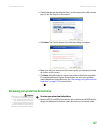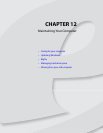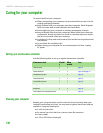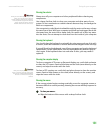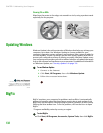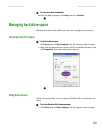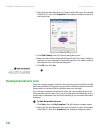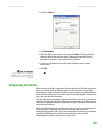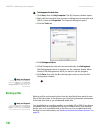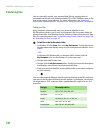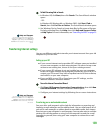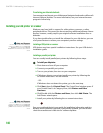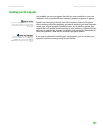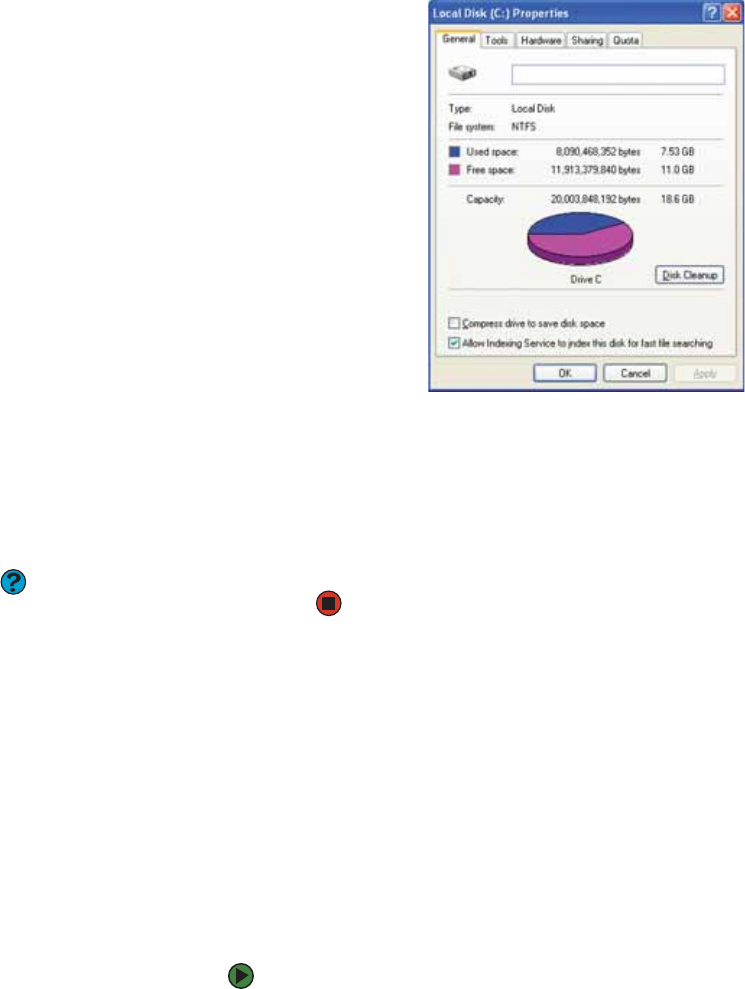
CHAPTER 12: Maintaining Your Computer www.emachines.com
134
2 Right-click the hard drive that you want to delete files from, for example
Local Disk (C:), then click Properties. The Properties dialog box opens at
the General tab.
3 Click Disk Cleanup. The Disk Cleanup dialog box opens.
4 Make sure that the check box beside each file type you want to delete is
selected. For more information about file types you can delete, read the
descriptions in the Disk Cleanup dialog box.
5 Click OK, then click Yes .
Help and Support
For more information about Windows
Update, click Start, then click Help and
Support. Type the keyword disk cleanup
in the Search box, then click the arrow.
Checking the hard drive for errors
The Error-checking program examines the hard drive for physical flaws and file
and folder problems. This program corrects file and folder problems and marks
flawed areas on the hard drive so Windows does not use them.
If you use your computer several hours every day, you probably want to run
Error-checking once a week. If you use your computer less frequently, once a
month may be adequate. Also use Error-checking if you encounter hard drive
problems.
To check the hard drive for errors:
1 Click Start, then click My Computer. The My Computer window opens.
2 Right-click the hard drive that you want to check for errors, for example
Local Disk (C:), then click Properties. The Properties dialog box opens.




